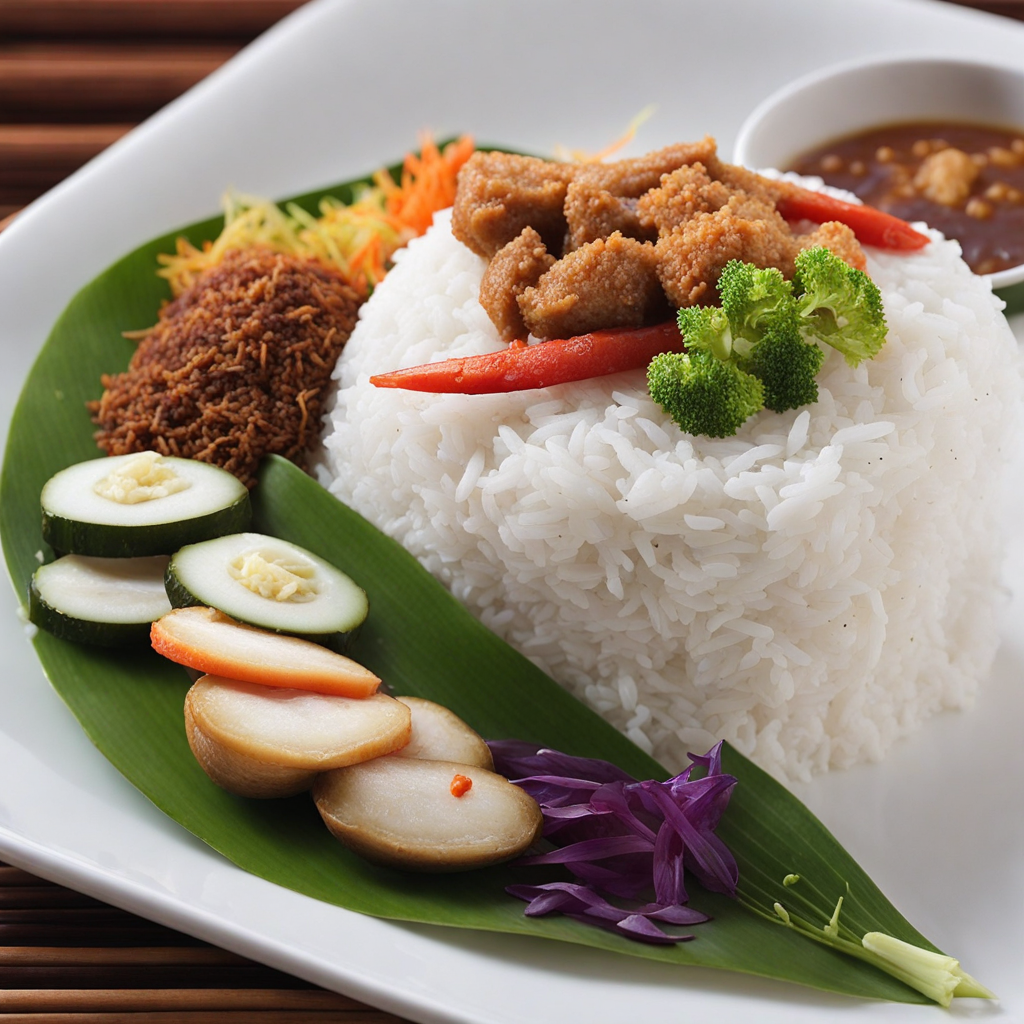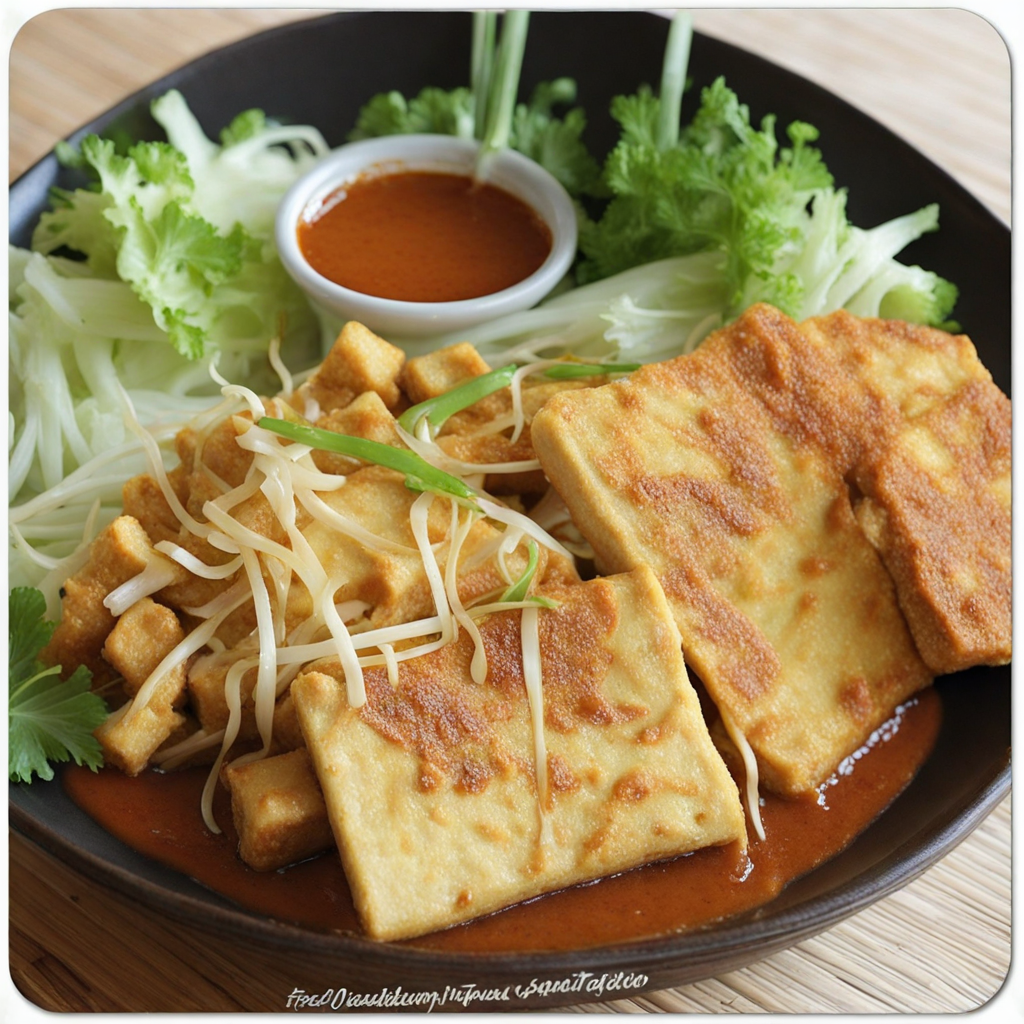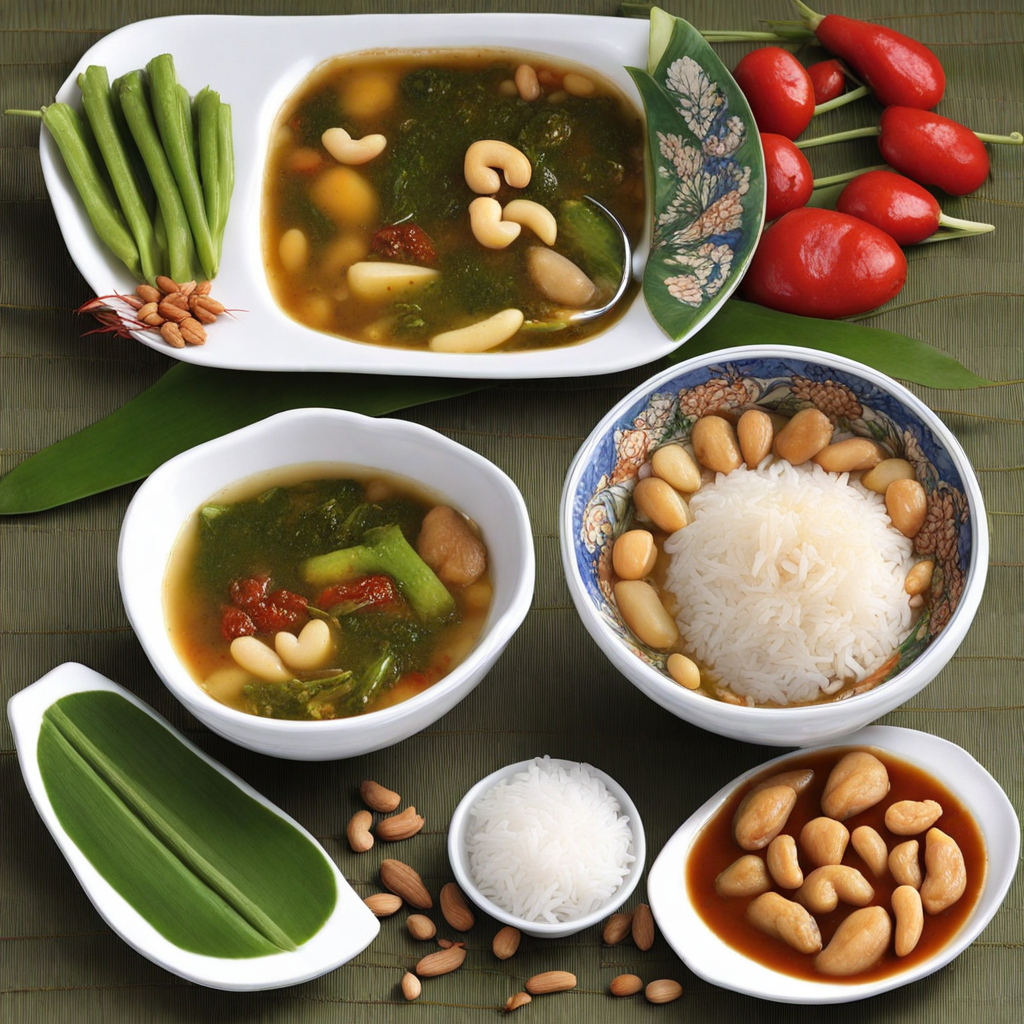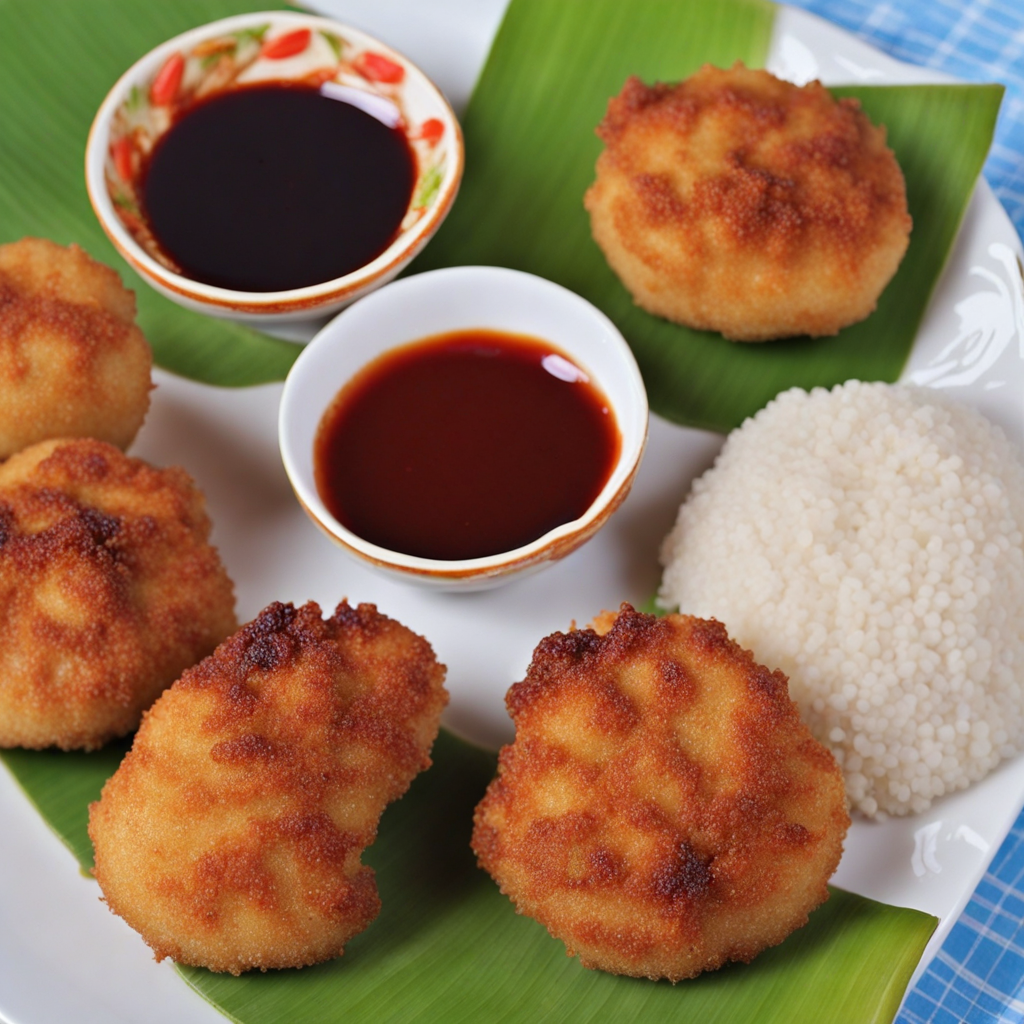Es Campur
Es Campur is a vibrant and refreshing Indonesian dessert that beautifully showcases the country's rich culinary traditions. This delightful treat is a mix of shaved ice topped with a variety of colorful ingredients, creating a visually appealing dish that is as pleasing to the eyes as it is to the palate. Common components include sweetened fruits like avocado, jackfruit, and young coconut, which provide a burst of natural sweetness and texture. The addition of grass jelly and pandan-flavored jelly adds an intriguing chewiness that complements the other elements perfectly. The dessert is often drizzled with a syrup made from condensed milk, coconut milk, or a sweet syrup infused with flavors like pandan or rose, enhancing the overall taste profile. The balance of flavors is key: the sweetness of the fruits and syrups mingles harmoniously with the creaminess of the coconut milk, while the coolness of the shaved ice refreshes the palate, making it an ideal treat for hot days. Each spoonful offers a delightful contrast of textures and temperatures, inviting you to savor the experience with every bite. Es Campur is not just a dessert; it embodies the essence of Indonesian street food culture, often enjoyed at bustling markets and food stalls. The beauty of this dessert lies in its versatility; it can be customized with various ingredients based on personal preference or regional variations. Whether you're a fan of fruity desserts or creamy treats, Es Campur promises a unique taste adventure that captures the spirit of Indonesia's diverse flavors.
How It Became This Dish
Origin of Es Campur Es Campur, a beloved Indonesian dessert, finds its origins in the bustling streets and vibrant markets of Indonesia, particularly in Java. The term "es" translates to "ice" in Indonesian, while "campur" means "mixed." This delightful treat is a refreshing combination of shaved ice and a medley of colorful ingredients, making it a popular choice in the tropical climate of Indonesia. The roots of Es Campur can be traced back to the influence of various cultures that have shaped Indonesian culinary traditions over centuries, including Chinese, Hindu, and indigenous traditions. During the colonial period, the introduction of ice-making technology allowed for the widespread availability of ice in Indonesia, which transformed the local dessert scene. Prior to this, desserts were typically made with fresh fruits or sweet syrups. The arrival of ice made it possible to create more elaborate frozen treats, paving the way for the evolution of Es Campur as we know it today. The use of ice not only enhanced the texture but also added a level of sophistication to what was once a simple fruit dish. \n\n Cultural Significance Es Campur is more than just a refreshing treat; it holds significant cultural importance in Indonesia. It is often enjoyed during special occasions, celebrations, and traditional ceremonies. The vibrant colors and variety of ingredients symbolize the rich diversity of Indonesian culture. Each region of Indonesia has its own unique take on Es Campur, showcasing local flavors and ingredients. In this way, the dessert serves as a reflection of the local culture and traditions, bridging the gap between different communities across the archipelago. Additionally, Es Campur is commonly sold by street vendors, making it an accessible indulgence for people from all walks of life. This street food culture fosters a sense of community, as families and friends gather around stalls to enjoy this treat together. The act of sharing food, particularly something as vibrant and communal as Es Campur, strengthens social bonds and reinforces cultural ties. \n\n Development Over Time As Es Campur evolved, so did its ingredients and preparation methods. Traditional versions of Es Campur typically include a base of shaved ice topped with a variety of sweet items such as fruits (like jackfruit, avocado, and young coconut), jelly-like substances (often made from agar-agar), and sweetened condensed milk. Over time, new ingredients have been incorporated, often influenced by globalization and culinary innovation. In contemporary Indonesia, one can find Es Campur variations that include modern elements such as syrups flavored with pandan or fruit puree, further enhancing the complexity of flavors. Some vendors even offer unusual combinations, such as chocolate or coffee flavors, catering to a younger audience looking for novel experiences. This adaptability highlights the dessert’s ability to evolve with changing tastes while still retaining its core essence. \n\n Regional Variations The beauty of Es Campur lies in its regional variations. In Aceh, for instance, a version called "Es Campur Aceh" features local fruits like rambutan and is often served with a splash of coconut milk. In contrast, in Bali, the dessert might include a combination of tropical fruits and local sweet syrups, reflecting the island's unique agricultural bounty. Each variation tells a story of the local environment, ingredients, and cultural practices, making Es Campur a canvas for regional expression. Moreover, the influence of the Chinese community in Indonesia has introduced elements like grass jelly and sweetened red beans into the mix, showcasing the blending of culinary traditions. This fusion aspect of Es Campur not only enriches the dish but also exemplifies the historical interactions among different ethnic groups in Indonesia. \n\n Es Campur in Modern Times Today, Es Campur continues to be a staple dessert in Indonesia, particularly during the hot months and during Ramadan, when it serves as a refreshing way to break the fast. Street vendors and small shops dedicated to selling Es Campur can be found in almost every city and town, each with its own signature style. The rise of social media has also contributed to the popularity of Es Campur, as visually appealing presentations and unique ingredient combinations attract attention and encourage sharing among younger generations. Food festivals and culinary events across Indonesia often feature Es Campur, allowing chefs and home cooks to showcase their creativity while honoring traditional recipes. This celebration of Es Campur not only highlights its importance as a dessert but also emphasizes its role in Indonesia’s culinary heritage. \n\n Conclusion: A Timeless Delight Es Campur is more than just a dessert; it is a historical narrative woven into the fabric of Indonesian culture. From its humble beginnings as a simple cold dish to its status as a celebrated treat enjoyed by many, Es Campur encapsulates the essence of Indonesian life—diverse, vibrant, and ever-evolving. As it continues to adapt to modern tastes while honoring its rich history, Es Campur remains a timeless delight that will surely be cherished by future generations.
You may like
Discover local flavors from Indonesia







